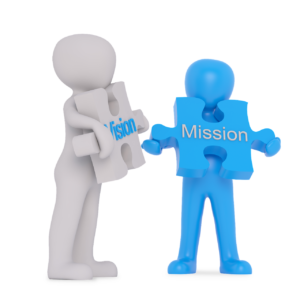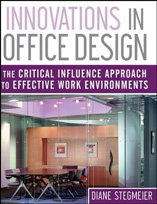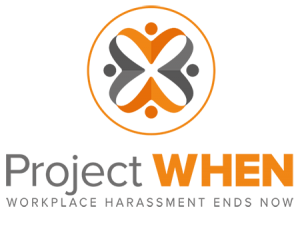Critical Influence™: Vision and Mission
What are corporate vision and mission statements?
 There is a reason for everything and this rings true in corporations large and small. Every organization fundamentally establishes a foundation or a guiding principle to light the path as the business thrives. The vision and mission of the enterprise constitute this principle and should always reflect why the enterprise exists.
There is a reason for everything and this rings true in corporations large and small. Every organization fundamentally establishes a foundation or a guiding principle to light the path as the business thrives. The vision and mission of the enterprise constitute this principle and should always reflect why the enterprise exists.
- A corporate vision statement articulates the future state the organization wishes to create.
- An organization’s mission statement describes how that vision will be achieved.
How does an organization’s vision and mission statements co-exist?
Rather than being treated as separate statements, the two should go hand in hand to lead an enterprise to its future. However, it is also important to identify the difference between the two in order to understand how one cannot go without the other.
The vision statement is focused on long-term direction—where the organization is headed—whereas the mission statement deals with the present, relative to such details as what the business is today, the markets it covers, and how it serves its customers.
Together, these statements should be a positive driving force that reflects why the enterprise exists. At the same time, it should guide employees in the right direction for the long term, even as it lays out the path when shorter-term adaptations are made according to annual strategic plans, quarterly goals, or the priorities of any given workday.
An organization’s vision or mission statements may evolve over time, in response to changes in the industry in which it operates, but, generally, there is no rewriting of the “why we exist” exercise that takes place each December as the board of directors and executive leaders look to the next calendar year. That is, the messages contained in the organization’s vision and mission statements should be sustainable.

As part of the 15 Critical Influences™, this page on Vision and Mission is integrated with actual content from the book Innovations in Office Design: The Critical Influence Approach to Effective Work Environments™ by SCG Founder Diane Stegmeier.
How corporate vision and mission statements can guide your organization through change
Serving as a positive driving force, these statements should be the starting point for short-term and long-term business decisions. It is not just something that companies plaster on their office walls, bulletin boards, or websites. A company “walks the talk” when it comes to its vision and mission statements guiding leadership on how to treat employees and customers in given situations.
 Moreover, these statements are usually clearly articulated not just to key leaders but more importantly to employees and customers to give them a sense of the company’s purpose of existence and set their expectations.
Moreover, these statements are usually clearly articulated not just to key leaders but more importantly to employees and customers to give them a sense of the company’s purpose of existence and set their expectations.
Winning organizations have unique principles that they live by. An organizational vision that emphasizes “long-term trusting relationships with its customers,” yet does not trust employees to adopt on-campus mobility, is not practicing what it preaches.
As one of the Critical Influences™ that can affect organizational endeavors, let’s take a closer look at how vision and mission statements can directly impact the behavior of employees in the workplace.
Veering away from the company’s vision and mission affects stakeholders
Oftentimes, leaders and decision makers lose sight of the organization’s guiding star, thus losing focus in the process of implementing a change initiative.
Stegmeier Consulting Group was called in to assist a company that experienced this issue. Part of this organization’s mission statement emphasized the importance of building its reputation and success through long-term, trusting relationships with its customers.
At the time of the engagement, the company was undergoing a massive restructuring which involved the integration of a new technology. However, instead of considering all parties involved, the executives are more concerned over how the ongoing change would project onto the customers. They failed to consider how the employees were having a hard time adjusting to new work processes. Performance at the company’s Customer Care Department went downhill due to frustrated customers complaining about the extended response time which was caused by the employees having to manually search hard copies to resolve customer issues.
The problem escalated when a top employee was advised by his physician to temporarily work from home due to a stress-related medical condition. Instead of accommodating this request, management decided to put the employee on short-term disability since they had never done the suggested workplace option before. They doubted their talented employee and displayed lack of trust when they expressed their fear of not knowing if the employee would remain productive away from the company’s premises.
This case illustrates how losing sight of an organization’s mission and vision can impact the behavior of stakeholders. The company neglected its mission built on trusting relationships. This left employees and customers wondering and commenting on the company’s contrasting vision and actions.
Vision and mission lived out in the physical work environment
How a company lives out its vision and mission can be seen in the optimization and utilization of the physical work environment.
A health insurance company or hospital system may state that its mission is to contribute to a healthier and more active society. However, what can be observed in its work environment might be the complete opposite of these principles.
Imagine the following. The cafeteria is filled with greasy fried foods and sugary drinks. Employees are discouraged from using the corporate gym during the day since it is ‘working hours.’ As such, the gym is swamped with people at the close of the traditional work day. Many would rather go home than try to play a game of tug-of-war for spaces and gym equipment.
Anyone who would witness this scenario upon visiting this workplace can tell that the company is not walking the talk. What can the company do to successfully reflect its mission in its physical work environment?
To start with, the company could encourage walking meetings and offer healthier dining and snack options to ensure alignment with its mission of seeing a healthy community.
Additionally, instead of depriving employees the autonomy over using the gym, leadership could set an example and encourage healthy behavior by spending some time working out in the middle of the day. This would also show that it is acceptable to use workout facilities whenever employees see it fit because there is implicit trust that people will accomplish their work tasks.
As demonstrated, it is essential to take a holistic approach in ensuring that the organization’s vision and mission is lived out in the physical workplace. This approach includes a thorough evaluation of the Critical Influences™ present within the organization.
Corporate goals as a pivotal factor in change management
A company that SCG successfully worked with was Nike Inc. The company’s Workplace Design + Connectivity Team was transitioning to activity- based seating and they sought our expertise in ensuring that employees would be prepared for new ways of working.
As part of our engagement, we needed to familiarize ourselves with Nike’s vision for the organization and take this into account to help the team transition to a new workplace strategy without veering away from its established goals and principles.
SCG conducted a series of proprietary activities, including an Aligning for Action working session which was done to ensure that the company’s change management efforts were aligned with corporate goals, workplace strategy objectives and the company’s culture.
By doing this, SCG was able to help Nike rethink their foundation as an organization to ultimately create a plan for managing employees’ transition to a work environment focused on activity-based seating.
Consulting services to help you realign your goals
Your organization’s vision and mission can easily get lost in the process of managing workplace change initiatives. When this happens, the whole endeavor will start to feel like a burden not just to change managers but also to the employees and customers. Does this sound like something that you need help with? Stegmeier Consulting Group can work with you in realigning your goals. Start by filling out the form below.



